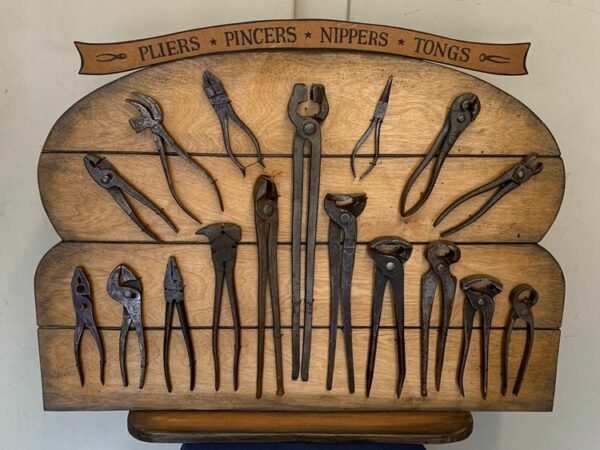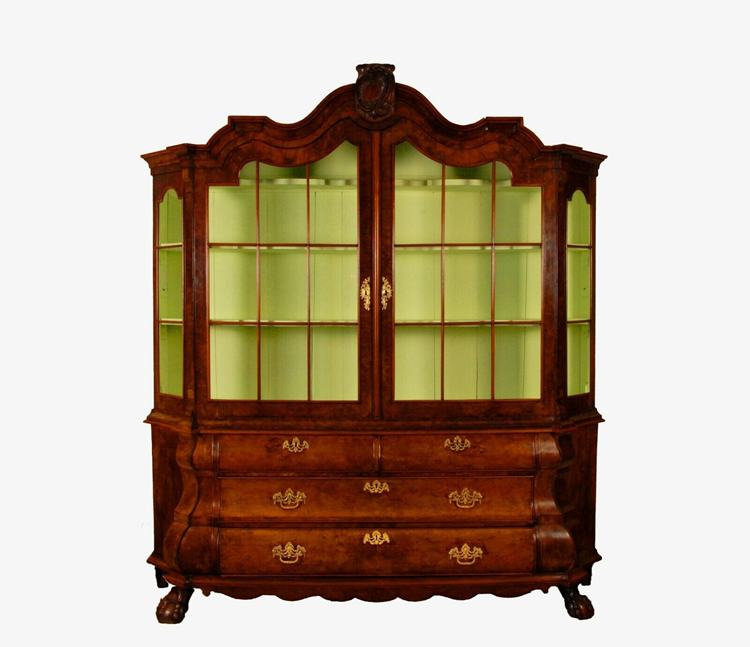
China cabinets are significant in the history of Chinese antiques, dating back to the 17th century. They were originally designed for royalty and the wealthy, but they have now become commonplace in the twenty-first century.
Nonetheless, this in no way diminishes the worth of the antique china cabinets. The earlier-made ones are still as valuable as they were back then, although royalty is unlikely to purchase them today.
Continue reading to learn how to determine the age and value of your antique china cabinets.
Table of Contents
The History of the Antique Cabinet
A china cabinet is a shelf or cabinet made of wood that holds porcelain or other types of ceramics like plates, bowls, glasses, and so on, usually for display by the host of the house.
It is typically made of wood and has a front made of glass; many of them have curved fronts. They are part of traditional dining furniture.
It is a common misconception that china cabinets originated in China due to their name, but this is not the case. They were first made in England to allow the then-Queen of England, Queen Mary, to display her collection of porcelain dubbed “china” by Europeans.
Many wealthy ladies and lords across Europe saw what the Queen had done and felt the need to purchase their own china cabinets, also primarily for displaying their vast porcelain collections and occasionally for special dinners.
Cabinet makers soon began designing their own varieties of china cabinets in response to this demand. Thomas Chippendale’s cabinets were among the most popular in 18th-century England.
Six Popular Antique China Cabinets
Although china cabinets have evolved over time, there are still some types of antique china cabinets that will pique your interest. Some of them will be discussed below;
❖ Antique Step Back China Cabinet
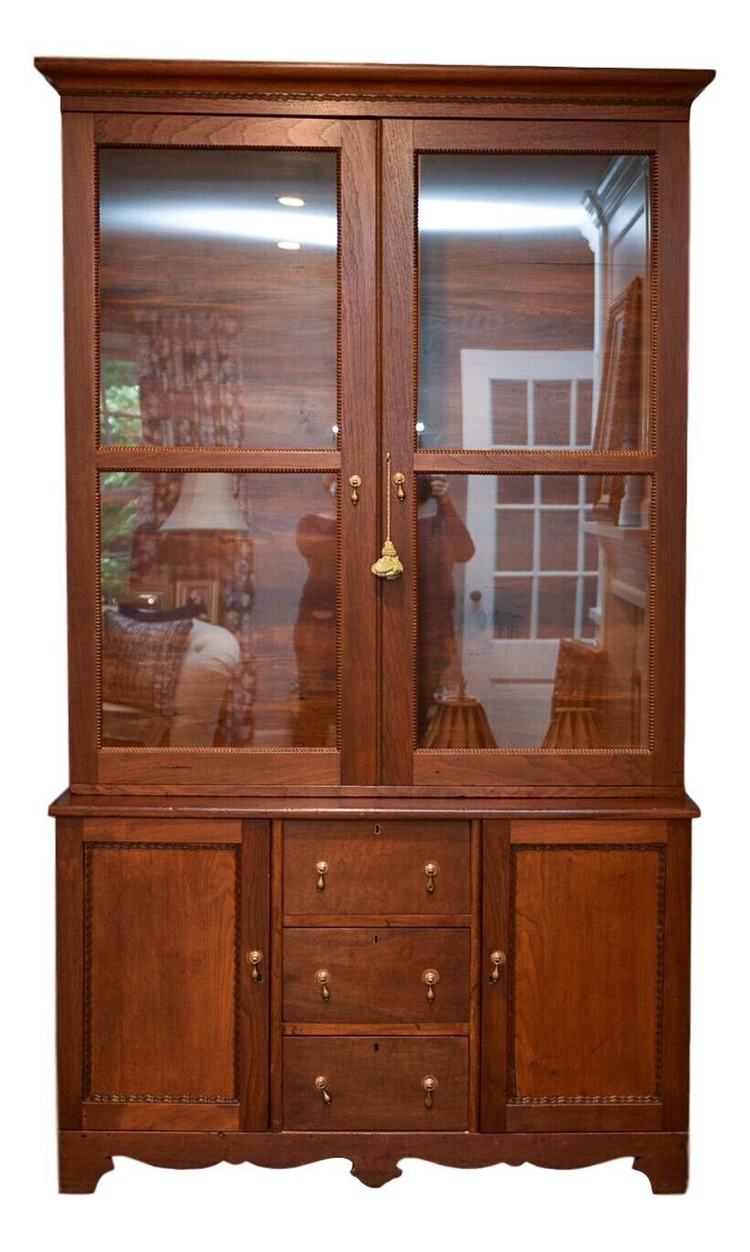
The step-back china cabinet was one of the most popular types of cabinets during the 19th and 20th centuries. It is a glass cabinet placed inside a closed-out cupboard. Occasionally, this type of cabinet has a space between the glass cabinet and the enclosed cabinet.
❖ Antique Breakfront China Cabinet
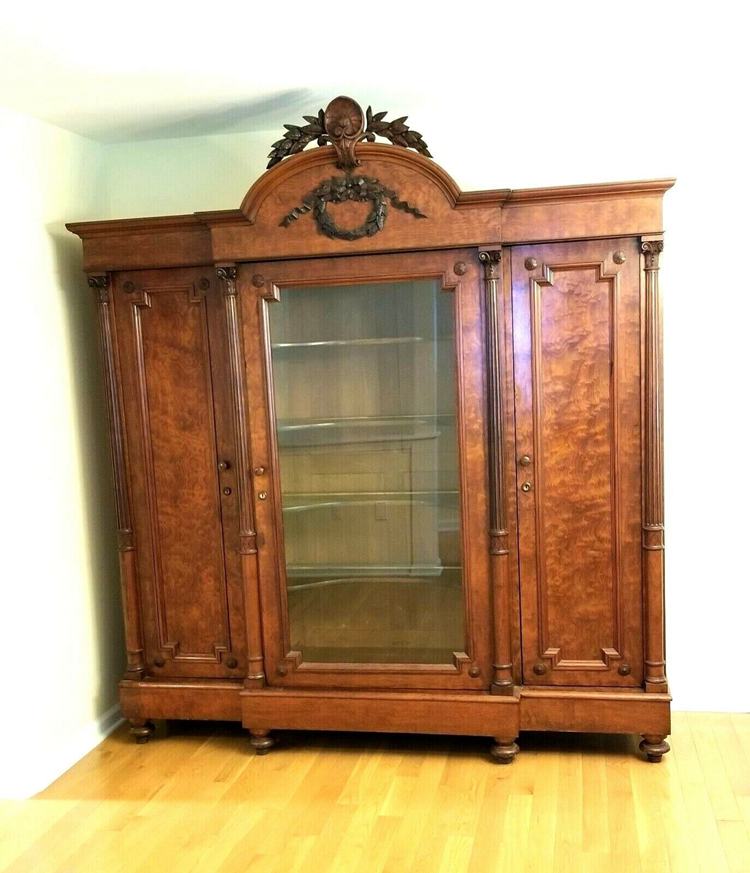
As depicted in the image above, a breakfront china cabinet is typically a full-glass cabinet (although some may have drawer bottoms) with the middle section protruding more than the two other sections.
The breaks may be a gentle curve, or they may be pronounced. The antique breakfront china cabinet has a lot of space, owing to the additional compartments.
❖ Antique Hutch-Style China Cabinet
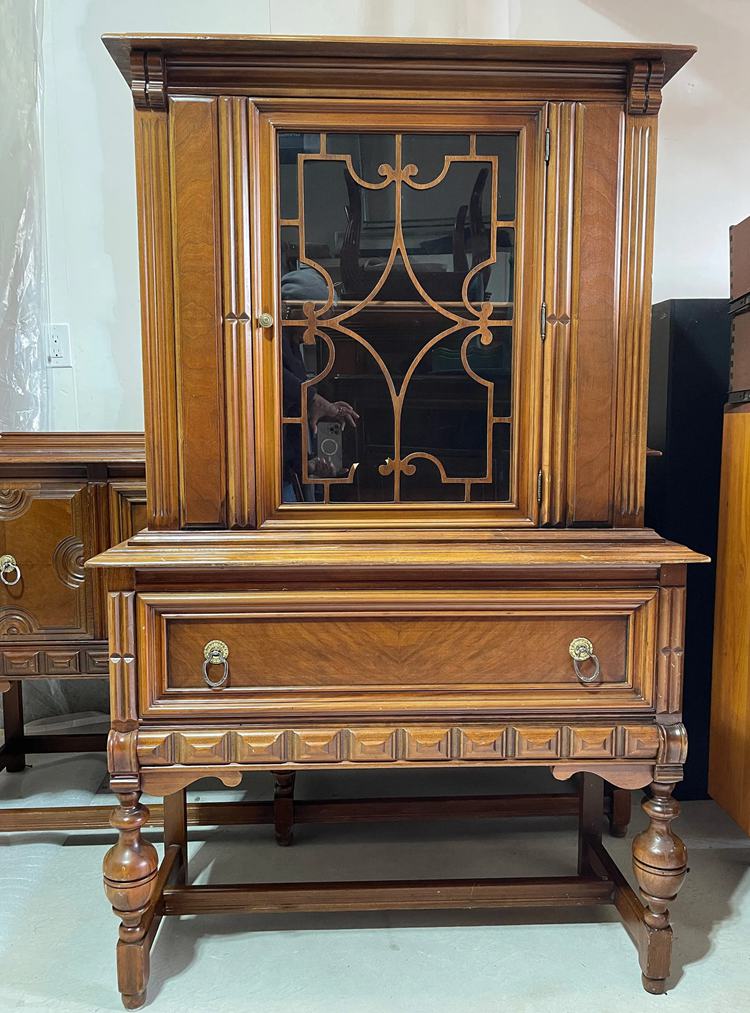
This antique piece of furniture has two sections, similar to the step-back china cabinet: the top section and the bottom section. The Hutch-style cabinets are distinguished by a space between the two sections for displaying and/or storing your china, such as ceramic plates.
Traditionally, the bottom will feature drawers for storing additional cooking utensils. While the top has glass doors (which can also be left open) so you can see what’s inside, the sides are made of wood.
❖ Antique Corner China Cabinet
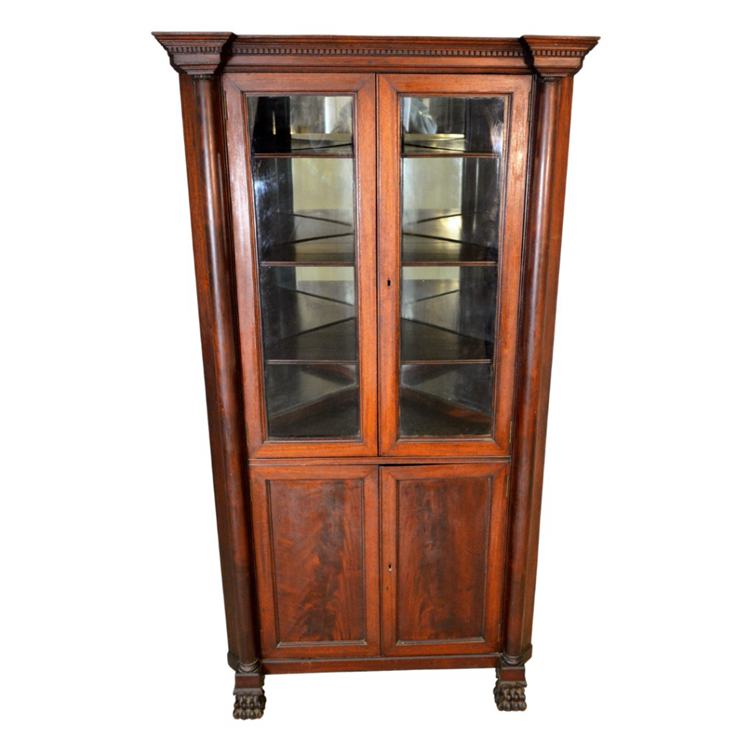
The corner china cabinet got its name because it was designed to fit into a corner and beautify your home while also storing and displaying your china. Corner china cabinets have glass doors, although the doors can be solid (not made of glass).
The china cabinet is divided into top and bottom sections, with the top section made of glass doors and the bottom section made of wooden doors (which can also be glass), and each section has two doors that open at the top and bottom.
❖ Antique Curved Glass China Cabinet
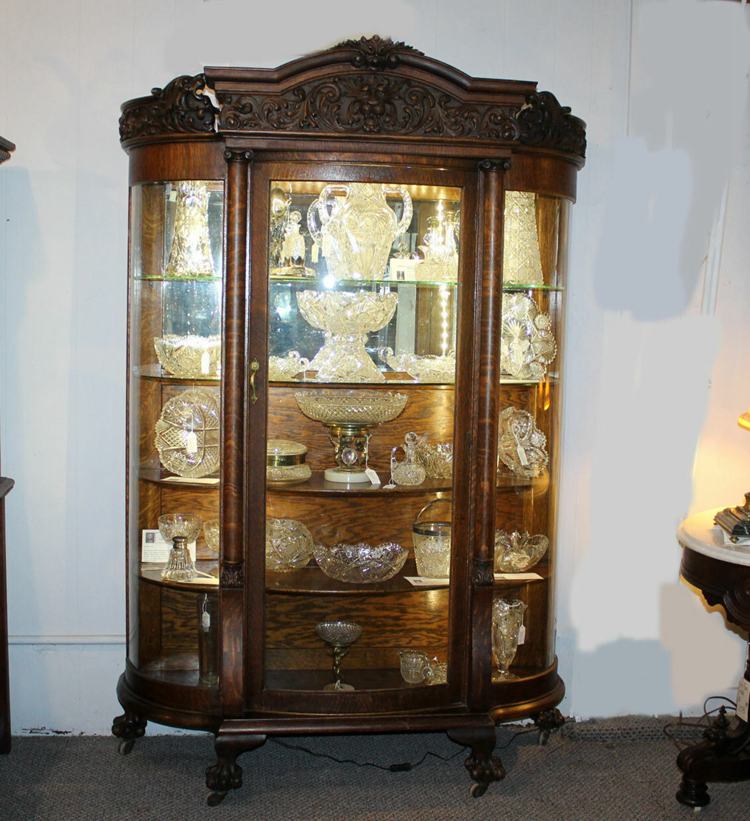
The antique curved glass china cabinet furniture, also known as the bow-front cabinet, is a cabinet with curved glass panels, unlike many we’ve seen before. They are rare and quite valuable because they are considered luxurious cabinets.
In addition to being used for luxury, they can be used to store your china. To store and access your stored china in the curved glass cabinet, you only need to open the middle door, as you can only access whatever you want to collect through this door.
❖ Antique Curio Cabinets
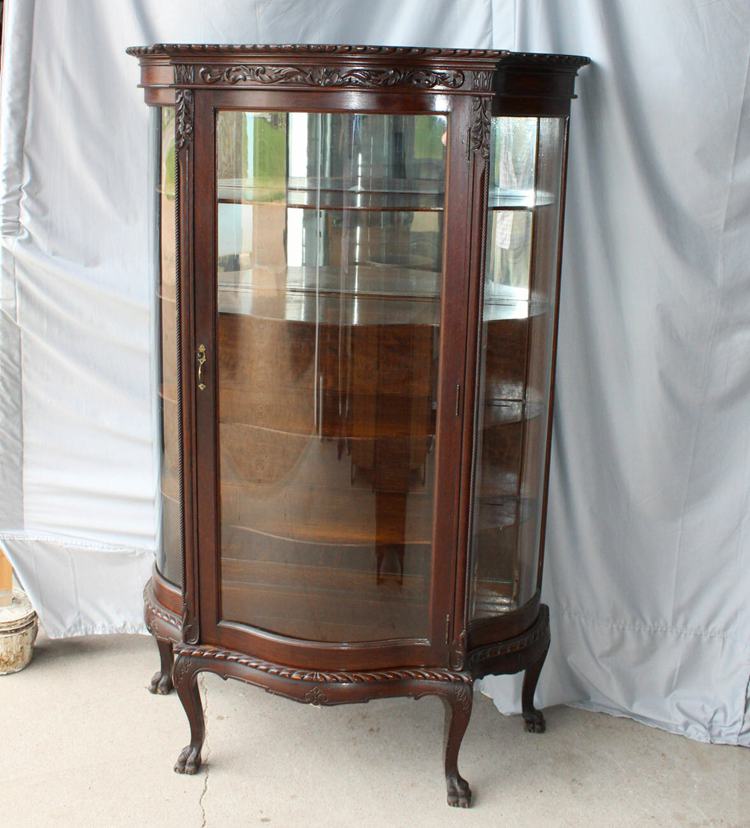
The antique curio china cabinet features a glass front, glass doors, and a mirrored back. This piece of furniture is perfect for people who want to show off their fine china and other collectibles (heirlooms and other antiques).
Interestingly, curio cabinets are not typically used to display china, despite the fact that they can be. They are instead used to showcase an array of items, such as family heirlooms, and other antiques, which makes them quite valuable.
They also have a luxurious appearance that makes everything in them appear exquisite. Some cabinets even include lights to enhance the beauty of the objects or antiques stored within them.
How to Date a China Cabinet
It is simple to refer to any wooden cabinet with glass doors as an antique, especially if it is a good copy of an actual antique. What makes your china cabinet antique, then? The date!
To be considered an antique, your china cabinet must be at least 100 years old. To determine the age, we will consider the following factors:
Examine the Designs:
Examining the aesthetics or design of your china cabinet can tell you if it’s a reproduction or an antique. Various antiques were produced during different time periods, giving them specific design characteristics.
There is the Victorian design era, the Edwardian design era, the Art Nouveau era, the Art Deco era, the Modern era, and so on.
The Victorian design era lasted from 1837 to 1901. The era was so named because it coincided with Queen Victoria’s reign. Because of the abundance of new ideas and originality in that time period, it is said to have been the golden age of furniture design.
Designs and carvings on the furniture from this time were very detailed and symmetrical, giving them a sense of flamboyance and elegance. So, if you come across an old cabinet with elaborate carvings and ornamentation, it was most likely made during the Victorian era.
The Art-Nouveau era spanned the late 19th and early 20th centuries. The era started in France and developed in England, although there were notable variations. Flowers, plants, trees, and other natural elements served as inspiration for the designs.
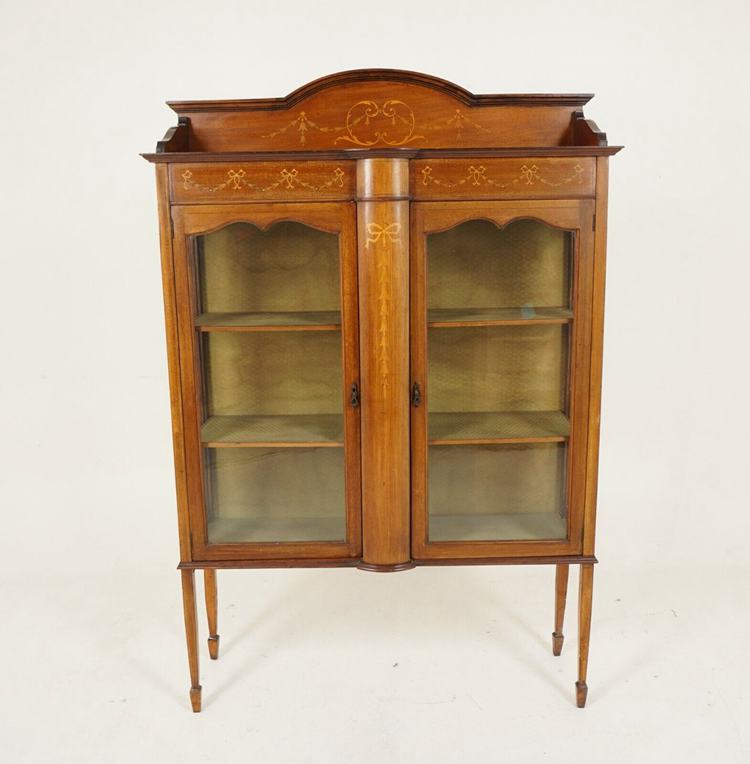
Edwardian-era cabinets have a more contemporary appearance than Victorian designs, while still incorporating earlier styles. These cabinet sets were more diverse in design.
The Edwardian era is named after King Edward, who ascended to the throne following Queen Victoria’s death. He continued his reign until the First World War.
Therefore, if you examine the designs on your china cabinet and notice symmetrical designs, designs inspired by nature, simple designs, or a wide range of designs, you most likely have an antique china cabinet.
Inspect the Crafting:
At the time that many of these china cabinets were crafted, industrialization did not exist, so they were typically handcrafted.
If your china cabinet appears to be machine-made, it is most likely a modern piece. Another thing to note is that handcrafted antiques are more valuable, so if you’re looking to sell, you should look into the crafting.
Keep an eye out for handcrafted marks, such as the surface workings of a chisel. This will demonstrate that the antique in your possession likely predates 1860. Then you will know for certain that you have a genuine antique.
Check for Wear and Tear:
Furniture made more than a century ago will not appear new or have a gleaming surface. As a result, you should always look for minor surface scratches that have accumulated over time.
In addition, look for flaws. It is unrealistic to expect your “antique” china cabinet to be flawless. The joints will also indicate how old the cabinet is. Old china cabinets usually have imperfect joints.
Check for Paint and Stain In Unseen Areas:
Unseen areas in old cabinets were typically left unpainted, as opposed to modern china cabinets; this could be a good indicator of whether or not your china cabinet is antique.
Check places that would not normally be considered (the bottom side of your cabinet, for example). You may have an antique cabinet on your hands if they are not painted or stained.
Manufacturer Markings:
Every artist will always want to leave their mark on their creations, so antique manufacturers will have their markings and tags inscribed on the cabinets, especially if they were handcrafted. When looking for antique cabinets, keep an eye out for this.
How Much is My Antique China Cabinet Worth?
“How much is my antique china cabinet worth?” is a question that can only be answered when you know how old the antique is, its current condition, and any unique features that come with the antique piece you own.
As previously stated, handcrafted antiques are more valuable, and the older your cabinet is, the more likely it is to be valuable.
The value of antique china cabinets varies according to the types and conditions listed above. These antiques can cost up to $10,000 or less than $1000. Curved glass cabinets are generally the most expensive option.
The antique curved glass china cabinet’s value is almost $10,000 a piece. A good example is the $7,750 embellished Victorian RJ Horner Cherub China Cabinet. The least expensive are the curio and corner cabinets. An example is the antique corner cabinet that was listed for $125.
Hutch China Cabinets are also valuable. However, many are not as valuable as curved glass cabinets. Hutch-style cabinets are usually less than $10,000. This hutch cabinet is listed to be sold for $3,950.
Although antique china cabinets tend to fall within the price range of their style/type, there are a few exceptions of antique china cabinets being more expensive than the style/type. A good example is the $13,500 antique late 19th/early 20th century Likely European Large Bombe China Cabinet.
Some of these antiques might be more expensive than usual because of their market demand. People must be willing to buy the China cabinet, and it must be authentic. If it is an original, it is much easier to auction off an antique China cabinet for far more than it is actually worth.
Ultimately, you can always determine your antique china cabinet value, particularly if you are making your purchase offline or in person. You can also determine the worth of your china cabinet if you are selling it.
Where to Buy and Sell An Antique China Cabinet
A collector or seller of antiques who wishes to buy or sell an antique china cabinet may do so at yard sales, flea markets, or online marketplaces.
This article will concentrate on online marketplaces. Therefore, we will consider various locations where you can purchase or sell an antique china cabinet online.
eBay
eBay is one of the few places where you can buy or sell antiques. It is an online marketplace where you can buy and sell just about anything, including antiques. On eBay, you can auction off any old thing you want to sell or take part in an auction if you want to buy something.
However, you should exercise caution when trading on eBay. Only buy/sell from trusted and verified sources to avoid being duped out of your money or possessions.
Etsy
Etsy is another website that sells goods. You cannot auction your collectibles on Etsy, but you can trade them there. Similar to eBay, you must be cautious and only purchase from verified accounts on Etsy, as the platform itself does not produce, market, or sell any products.
Frequently Asked Questions
1. What Is the Most Sought-after Antique?
The Pinner Qing Dynasty Vase is the most desired and sought after antique. It is worth $80.2 million.
2. Are China Cabinets Now Outdated?
Originally, china cabinets were used to display anything fancy or luxurious, particularly your china. However, as people prioritized functionality over aesthetics, china cabinets were relegated to the role of storage. However, the cabinets are gradually returning to their original purpose.
3. What Is the Most Sought-after China Antique?
The blue willow is the most sought-after China antique to date. It is also among the most manufactured. To date, copies are still being produced. Obtaining an authentic, original blue willow is the prize, and if you obtain one, it could be extremely valuable.
Conclusion
China cabinets, along with other types of antique furniture, are in high demand at all times. They are exquisite collectibles. We hope that you are now able to determine the age of your antique china cabinets as well as their value.
If you have any questions or comments regarding this topic, or if you have any suggestions regarding the next antiques to value, please leave a comment below.
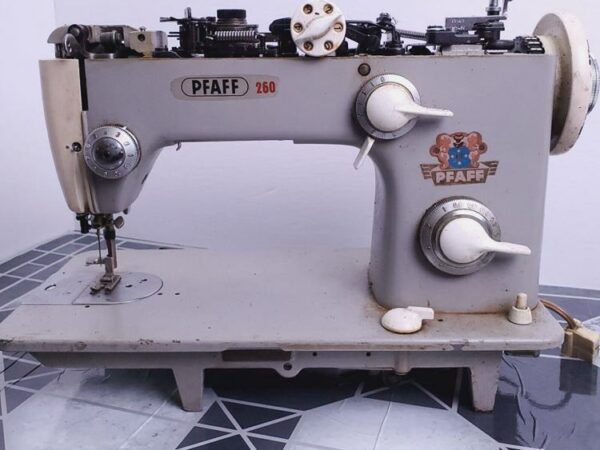

![Vintage Medicine Cabinet Styles Guide [With Pictures]](https://www.txantiquemall.com/wp-content/uploads/2021/12/Vintage-Medicine-Cabinet-Styles-Guide-600x450.jpg)

